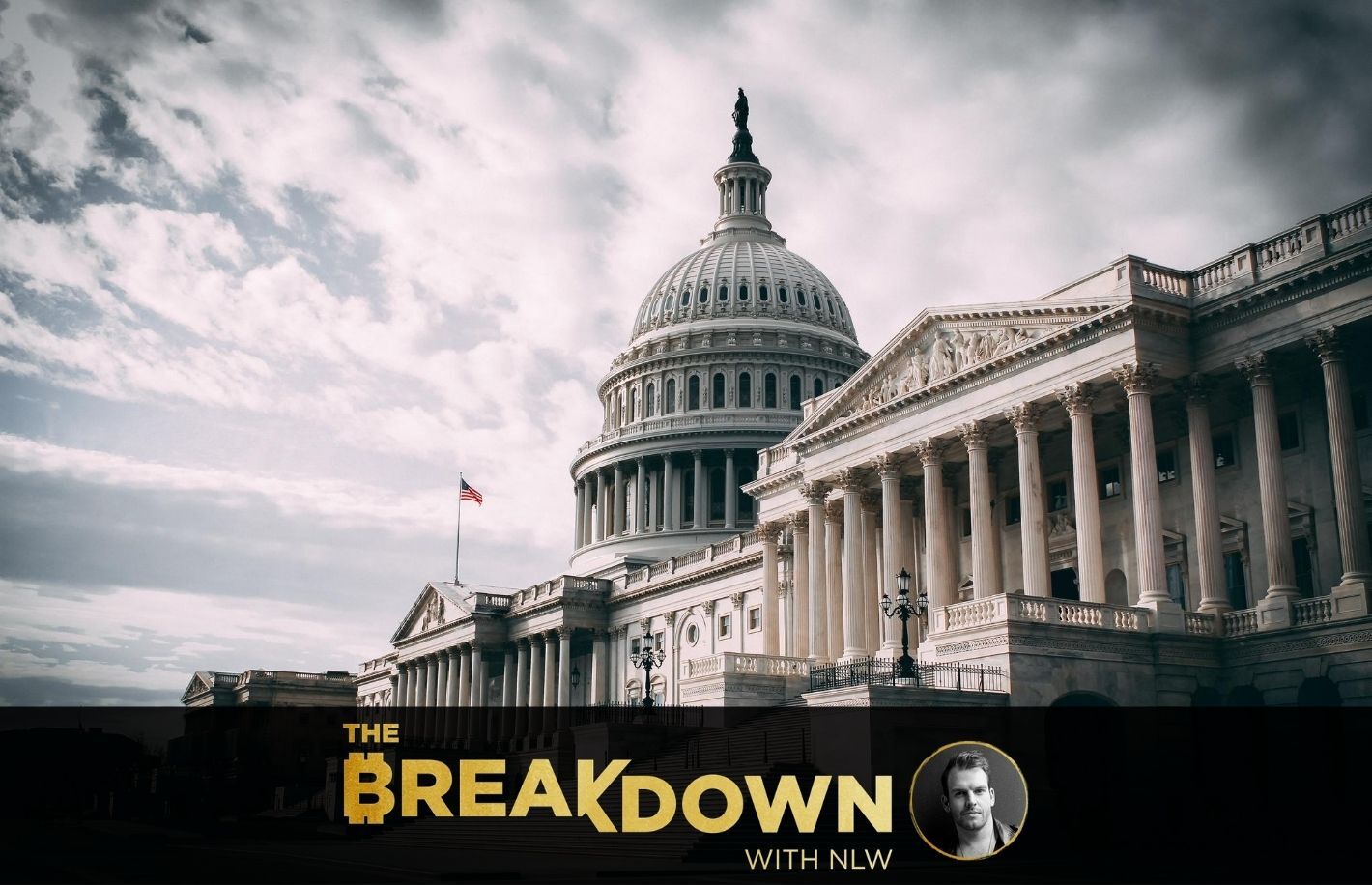How the COVID-19 Crisis Revived the Digital Dollar Debate
Under one proposal, U.S. citizens would be gifted a digital wallet, called a FedAccount, maintained by the Federal Reserve. (Credit: Houston Federal Reserve by Random Sky on Unsplash)
How the COVID-19 Crisis Revived the Digital Dollar Debate
Lawmakers have used the coronavirus crisis to revive the digital dollar debate. U.S. House and Senate bills proposed in March, which would allow individuals to hold checking accounts directly with the Federal Reserve, have renewed demand for a tech upgrade of the central bank’s issuance system.
Millions of U.S. taxpayers have waited for weeks for promised stimulus payments of up to $1,200 per person as the COVID-19 pandemic ripples into an economic crisis. While some received direct deposits in mid-April, those without bank accounts or a bank account on file with the Internal Revenue Service, who haven’t received a tax refund in recent years or who are married to an immigrant are still expecting that a check will arrive.
Proponents of digital dollars and central bank digital currencies say a digitized monetary system could solve the logistical question of how to quickly disburse large sums to many individuals with varying access to banking services. Others believe it would offer the state too much control.
How did we get here? Here’s a breakdown of what the proposed digital dollar is, how the coronavirus pandemic played a part in reigniting the conversation about central bank digital currencies and what it all means for the future of money:
What is a digital dollar?
A “digital dollar,” as defined by current congressional bills, is not a decentralized blockchain-based token, but rather a debt notation on a centralized ledger maintained by the Federal Reserve.
A U.S. digital dollar wouldn’t be a central bank digital currency, which itself isn’t exactly a cryptocurrency. It would not be decentralized; on the contrary, it would be issued by the Fed. A centralized database (run by the Fed or another entity) would securely track consumer and business balances, and people could access funds through digital dollar wallets, which would also be managed by the Fed.
How did COVID-19 renew the digital dollar debate?
In the U.S., the need to distribute economic stimulus payments has driven a renewed interest in digital dollars. Lawmakers tried to create a mandate for the Fed to create digital dollars to disburse funds from the country’s $2 trillion coronavirus economic stimulus package, a complicated challenge since the infrastructure for this doesn’t yet exist.
Under the current system, Americans have to wait for direct deposits or physical checks to arrive from the U.S. Treasury Dept. Banks can legally withhold funds from stimulus deposits into accounts with negative balances, something the CARES Act doesn’t limit.
At the same time, physical cash can be a petri dish of germs, no less during a global pandemic. The likelihood of COVID-19 being transmitted via banknotes is unclear, but other countries have been cautious. South Korea temporarily took banknotes coming into its central bank out of circulation, while China deep-cleaned its cash with high temperatures and ultraviolet light — an approach that destroyed some notes.
The proposals before Congress in March would have charged the Fed with issuing both digital dollars and digital wallets that would give Americans direct access to the funds.

While those proposals didn’t make it to the final stimulus package act, they opened a window for a broader conversation around a central bank-issued currency, especially as government payments to struggling Americans and small businesses have been delayed by bureaucracy and logistics.
Lawmakers eventually decided to make payments by direct deposit, using the bank account information citizens had used for tax refunds. However, anyone who didn’t have account information on file with the IRS — or didn’t have an account at all — must wait for a physical check to arrive.
It took weeks for the government to begin issuing payments, and some Americans waiting for physical checks may not see funds for months. Those without bank accounts — who may need the cash the most — are likely to experience the longest wait times.
The digital dollars U.S. Sens. Maxine Waters (D-Calif.) and Sherrod Brown (D-Ohio) had floated would, in theory, have simplified the process of distributing stimulus payments, but the lack of an established payment system would have presented its own challenges. The technology for a Federal Reserve-issued digital dollar doesn’t exist yet, and many legal questions must be answered before it can be designed.
What are the pros and cons of a CBDC?
The digital dollar debate, and recent actions by China and other nations, are also rekindling the discussions around a central bank digital currency at large.
A central bank-issued digital currency could bring a number of benefits to users, including greater financial inclusion, more efficient payment systems and more options for managing monetary policy, according to the International Monetary Fund.
With the backing of a trusted government, central bank digital currencies may limit the adoption of privately issued currencies like stablecoins, such as Tether, that can be a challenge to regulate, the IMF has said.
But CBDCs aren’t without risks. Banks could see their role as financial intermediaries minimized, and central banks could see their balance sheets balloon, the IMF notes. A bloated balance sheet could make it harder for a central bank to manage inflation over time, particularly as the economy improves.
Digital currencies could be costly for central banks to maintain and may ultimately threaten to cost central banks their reputations by involving them in so many steps along the payment chain. Central banks could suddenly become subject to consumer sentiment while having to maintain stringent anti-money laundering practices.
Who else is developing CBDCs?
China continues to signal its commitment to creating a digital version of the yuan. One of its state-owned banks has been testing an interface for a digital yuan. The country is piloting a “DC/EP,” or “digital currency/electronic payment,” in four cities to replace some of its cash supply.
Separately, six central banks joined forces this year to share knowledge as they research the potential for CBDCs. The working group with the Bank for International Settlements includes the European Central Bank and central banks in Sweden, Canada, Switzerland, the U.K., and Japan. Among them, the Bank of Canada said it hasn’t found a compelling case to issue a CBDC while the Bank of England has left the door open, saying it sees private companies playing a larger part in the issuance and distribution of money.
Meanwhile, South Korea’s central bank in early April launched a 22-month pilot program to assess the implications of moving toward digital cash.
Where does the U.S. digital dollar stand?
The Federal Reserve has publicly talked about digital currencies for over a year, and it has been clear the development of one would be fraught with challenges.
“Unlike social media platforms or ridesharing applications, payment systems cannot be designed as they develop, due to the nexus with consumers’ financial security,” Fed governor Lael Brainard said in a December speech.
“Circumstances where the central bank issues digital currency directly to consumer accounts for general-purpose use would raise profound legal, policy and operational questions,” she said. “That said, it is important to study whether we can do more to provide safer, less expensive, faster, or otherwise more efficient payments.”
The Fed is working on its FedNow Service, a real-time payment service that could enable financial institutions to more quickly and cheaply transfer value than currently possible. While FedNow is not the same as the proposed digital dollar, let alone a CBDC, the service would bring U.S. financial rails one step closer to that vision.
Disclosure Read More
The leader in blockchain news, CoinDesk is a media outlet that strives for the highest journalistic standards and abides by a strict set of editorial policies. CoinDesk is an independent operating subsidiary of Digital Currency Group, which invests in cryptocurrencies and blockchain startups.








